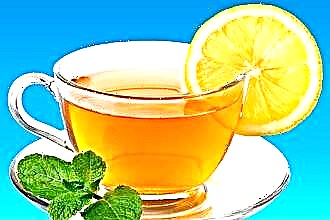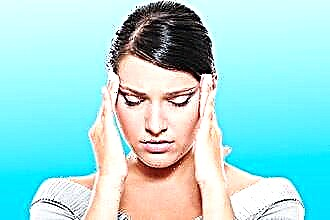Normally, nasal breathing does not depend on changes in body position. Sometimes it can become more rare or superficial, but we do not experience discomfort because of this. It happens that the nose gets blocked when lying down at night, which, of course, raises many questions for us.
 In this article, we will try to describe the most common causes of nasal congestion at night. This could be:
In this article, we will try to describe the most common causes of nasal congestion at night. This could be:
- vasomotor rhinitis;
- an allergic reaction to dust mites;
- unfavorable living conditions;
- cold;
- violation of the patency of the nasal passages (polyps, deformation of the septum, foreign body).
Now, in detail about each reason.
Vasomotor rhinitis
The development of vasomotor rhinitis is based on a change in vascular tone, as well as inflammation of the nasal mucosa. The disease can develop at any time of the year.
Causes
A disorder in the regulation of the tone of blood vessels can be caused by:
- long-term use of nasal agents with a vasoconstrictor effect, which is addictive. To obtain the initial effect, a person needs to instill the drug in large doses;
- hormonal disorders. They are observed against the background of taking or canceling hormonal medications. In addition, a change in the composition of hormones in the blood can be observed in diseases of the endocrine system, pregnancy, in adolescence;
- stress factors. Sometimes a stuffy nose at night in people with a labile psyche. Changes in vascular tone against a background of stress predispose to the onset of vasomotor rhinitis;
- bad ecology. If a person lives in an area with polluted air, the nasal mucosa and local blood vessels are irritated, which leads to rhinitis;
- anomaly in the structure of the nose. These can be congenital defects or a consequence of exposure to a traumatic factor;
- diseases of the nervous, cardiovascular system. With vegetative-vascular dystonia, the regulation of the tone of the blood vessels is disturbed, due to which a person may feel dizziness, headache, malaise, cold extremities, palpitations, chills, heart sinking, tingling in the heart zone;
- improper diet. In most cases, vasomotor rhinitis affects people who abuse spicy, hot foods.
Clinical signs
The symptom complex is represented by the following signs:
- transparent watery discharge;
- burning sensation, discomfort in the nasal area;
- sneezing;
- increased sweating.
When the position of the body changes, as well as at night, clogs one nostril. As a result, difficulty breathing is observed through the inferior nasal passage.
Treatment
To fight the disease, you must:
- identify and eliminate the root cause of deterioration;
- harden the body;
- use saline solutions to wash the nasal cavities;
- instill vasoconstrictor drugs;
To facilitate nasal breathing, homeopathic medicines (Delufen) are recommended, which are approved for use in a long course.
- carry out physiotherapy procedures (electrophoresis, laser, massage);
- go in for sports, which perfectly tones the body and restores the regulation of blood vessels.
Surgical intervention is performed when it is necessary to change the structure of the septum. In order to reduce the swelling of the mucous membrane, it may be recommended to remove local blood vessels, the expansion of which provokes the appearance of symptoms of the disease. The operation is performed using ultrasound or laser.
Tick allergy
The development of an allergic reaction is due to an increase in the concentration of ticks in the house. The content of dead skin cells and animal waste products in the dust has a beneficial effect on the reproduction of mites. The rapid emergence of new colonies is fraught with the development of an allergic reaction.
Habitat
 Usually mites live in natural fabrics, carpets, curtains, as well as books. The appearance of nocturnal nasal congestion is due to the close location of the respiratory tract to bedclothes, pillows, blankets, where dust mites especially like to be.
Usually mites live in natural fabrics, carpets, curtains, as well as books. The appearance of nocturnal nasal congestion is due to the close location of the respiratory tract to bedclothes, pillows, blankets, where dust mites especially like to be.
The likelihood of allergies is increased in people who are in smoky, dirty, damp rooms for a long time.
Symptoms
An allergic reaction is manifested:
- frequent sneezing;
- dry cough;
- tearing;
- nasal congestion;
- itchy tip of the nose;
- swelling of the tissues of the nose, eyelids;
- malaise;
- dryness of the nasopharynx.
The severity of allergic symptoms usually increases during sleep, when knocking out a carpet or removing dust from the surface of books.
Treatment
Therapeutic measures involve improving living conditions and taking antihistamines (Suprastin, Diazolin).
Accommodations
The reasons for the deterioration of nasal breathing at night may lie in the unfavorable microclimate in the room. If a person is at work all day, and his nose gets blocked only after returning home, it is possible that the provoking factor is in the room.
Usually a stuffy nose at night if the air in the room is very dry. To make breathing easier, you should:
- increase air humidity up to 60-65%;
- reduce the temperature to 19 degrees;
- use devices that do not dry the air to heat the room;
- regularly carry out wet cleaning, ventilate the room.
Cold
If a person is hypothermic due to strong wind, frost or rain, there is a risk of developing a cold. At the initial stage, it is manifested by sneezing, swelling of the nasal mucosa and malaise.
Treatment recommendations
Only if treatment is started quickly and the level of immune defense is high, a cold can be limited only to nasal congestion.
So what to do after hypothermia?
- inhale with an antiseptic solution (Chlorophyllipt) or inhale vapors of onions, garlic. The fact is that under the influence of the cold factor, the nasal mucosa becomes more sensitive to microbes, which increases the risk of infection;
- take a loading dose of lemon or ascorbic acid;
- drink hot tea with honey, lemon, ginger, black currant, raspberry every hour;
- carry out warming procedures. To prepare a foot bath, you will need mustard and warm water.
 The main goal is to achieve warming of the whole body. If you wish, you can take a warm herbal bath. As soon as you feel warm inside, you need to put on a warm sweater, socks and wrap yourself in a blanket.
The main goal is to achieve warming of the whole body. If you wish, you can take a warm herbal bath. As soon as you feel warm inside, you need to put on a warm sweater, socks and wrap yourself in a blanket.
If it was possible to block the development of a cold in time, in the first days after hypothermia, one nostril can be blocked, after which it will become much easier to breathe.
Strengthening the immune system should be done every day. This requires a healthy diet, good sleep, sports, hardening procedures and fresh air.
Violation of the patency of the nose
A decrease in the diameter of the nasal passages leads to swelling of the mucous membrane, due to which a disorder of nasal breathing is observed.
Polyposis growths
Such tissue growths in the nasopharynx or paranasal sinuses are of benign origin. They can be single or arranged in groups. The occurrence of polyps is more susceptible to people over 40 years old, with aspirin asthma or cystic fibrosis.
The severity of clinical symptoms depends on the stage of the polyps. Nasal congestion at night may appear in the first stage, when growths fill a small part of the nasal cavities.In an adult, as the disease progresses, the nose becomes blocked on both sides, which is why he does not breathe at all. Night snoring, snoring, sneezing and runny nose also appear.
The causes of polyps include:
- hereditary predisposition;
- frequent rhinitis;
- immunodeficiency;
- deformation of the septum;
- tendency to allergic reactions;
- chronic sinusitis.

Conservative treatment tactics include:
- elimination of the provoking factor;
- rinsing the nasal cavities with saline solutions;
- breathing exercises, massage;
- the appointment of antihistamines, hormonal, vasoconstrictor or antibacterial drugs;
- immunotherapy;
- the use of herbal, homeopathic remedies.
Surgical treatment is carried out in several ways:
- polypotomy (excision of the formation with a loop);
- endoscopic removal;
- laser exposure;
- removal by microdebrider.
Deformation of the partition
The causes of nocturnal nasal congestion may lie in the curvature of the septum and other anomalies in the structure of the nasopharynx. At the slightest impact of an unfavorable factor, for example, dry air or hypothermia, a narrower nasal passage can become obstructed.
Swelling of the mucous membrane leads to shortness of breath and discomfort.
Foreign body
After the penetration of a foreign body into the nasal passages, it can be localized in the choanal area and not cause acute symptoms. Irritation of the mucous membrane can be observed when the position of the object in the nose changes when a person goes to bed.
The consequence of tissue injury can be their swelling, which is why the nose cannot provide adequate air supply to the respiratory tract.
The danger lies in the high risk of a foreign object moving through the nasopharynx into the trachea, bronchi. With a sharp change in body position, it can enter the bronchi and provoke bronchospasm.
We found out why the nose stuffs up at night. Now, knowing the possible causes, you can save yourself and your child from serious complications associated with obstruction of the nasal passages.

 The main goal is to achieve warming of the whole body. If you wish, you can take a warm herbal bath. As soon as you feel warm inside, you need to put on a warm sweater, socks and wrap yourself in a blanket.
The main goal is to achieve warming of the whole body. If you wish, you can take a warm herbal bath. As soon as you feel warm inside, you need to put on a warm sweater, socks and wrap yourself in a blanket.

